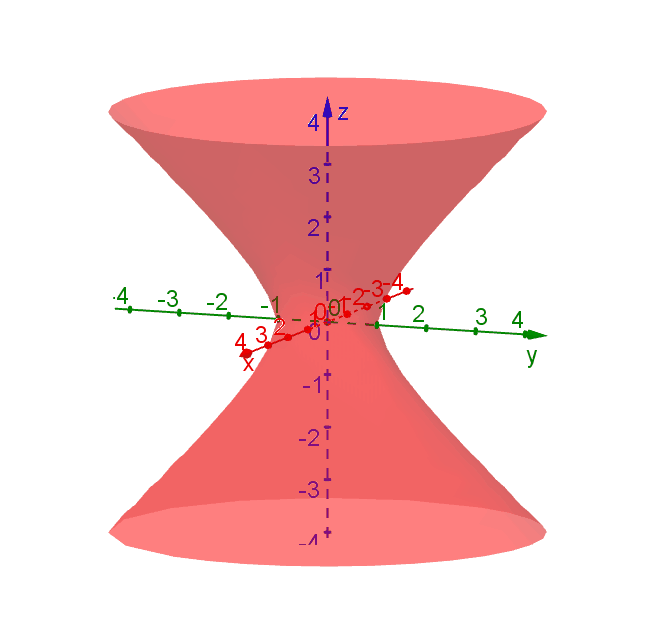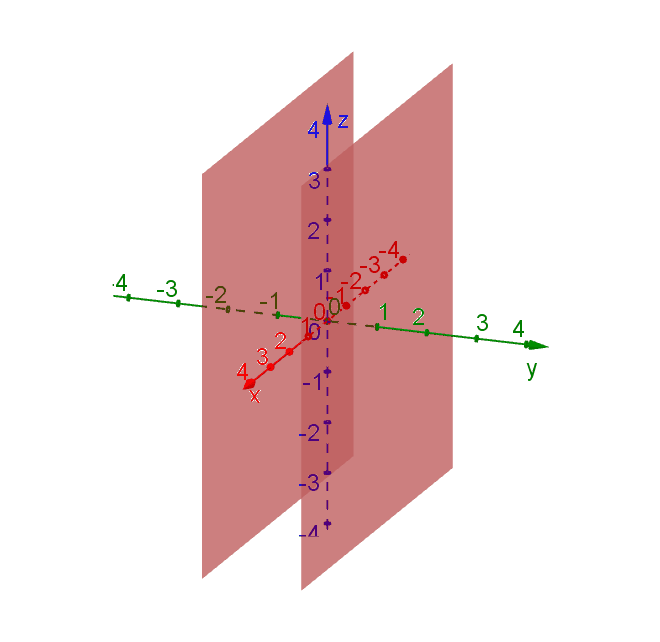
Scroll down to the bottom to view the interactive graph.
The signs of \(a\), \(b\) and \(c\) determine the shape of the quadric surface defined by \[ ax^2 + by^2 + cz^2 = 1.\] For example if we keep \(a\) and \(b\) positive, then a negative \(c\) gives a hyperboloid of one sheet with the centre axis along the \(z\)-axis, while positive \(c\) gives an ellipsoid (or a sphere if \(a = b = c\)). The following figure shows the transition from hyperboloid to ellipsoid by varying \(c\).

Can you determine the values of \(a\), \(b\) and \(c\) that give two parallel planes? You may explore using the interactive graph provided at the bottom of the page.

To view the interactive graph:
To rotate the graph, right click and drag.
Joseph Lo